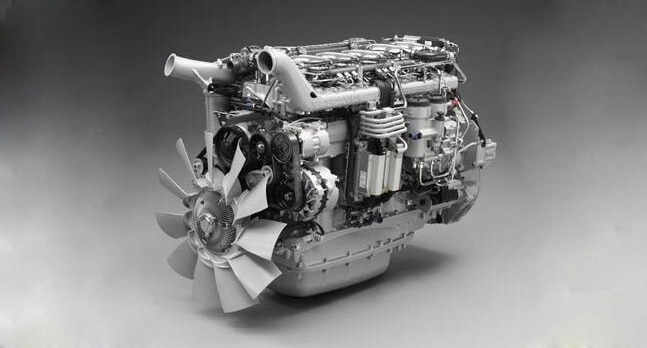What are the main performance indicators of internal combustion engines What does it mean

2023-07-17
What are the main performance indicators of internal combustion engines? What does it mean?
 The performance indicators of internal combustion engines are used to evaluate their efficiency, power output, and overall performance. Here are the main performance indicators and what they mean:
1.Power Output: Power output measures the amount of work an engine can produce over a given time. It is typically expressed in units such as horsepower (hp) or kilowatts (kW) and indicates the engine's capability to generate mechanical power.
2. Torque: Torque represents the rotational force produced by the engine. It is a measure of the engine's ability to provide pulling or turning force. Higher torque values indicate greater acceleration and towing capacity. Torque is typically measured in pound-feet (lb-ft) or Newton-meters (Nm).
3.Fuel Efficiency: Fuel efficiency measures how effectively an engine consumes fuel to generate power. It is usually expressed in terms of miles per gallon (mpg) or liters per 100 kilometers (L/100 km). Higher fuel efficiency means the engine can achieve more work output per unit of fuel consumed, resulting in cost savings and reduced environmental impact.
4.Compression Ratio: The compression ratio is the ratio of the total volume in the combustion chamber when the piston is at the bottom of its stroke (bottom dead center) to the volume when the piston is at the top of its stroke (top dead center). A higher compression ratio generally leads to improved thermal efficiency and better power output.
5.Specific Fuel Consumption: Specific fuel consumption (SFC) is a measure of the amount of fuel consumed per unit of power output. It indicates the efficiency of fuel utilization by the engine. Lower SFC values indicate better efficiency, as the engine can produce more power with less fuel consumption.
6.Thermal Efficiency: Thermal efficiency measures how effectively an engine converts the chemical energy in fuel into useful mechanical work. It is the ratio of the engine's net work output to the energy input from the fuel. Higher thermal efficiency indicates a more efficient conversion of fuel energy into useful work.
7.Exhaust Emissions: Exhaust emissions are the pollutants released into the atmosphere by the engine's combustion process. Key emissions include carbon dioxide (CO2), nitrogen oxides (NOx), particulate matter (PM), and unburned hydrocarbons (HC). Lower emissions indicate better environmental performance and compliance with regulatory standards.
8.Acceleration and Top Speed: Acceleration measures how quickly the engine can increase the vehicle's speed from a standstill or at a given interval. Top speed refers to the maximum achievable speed of the vehicle. These indicators reflect the engine's ability to produce power and provide the desired level of performance for the application.
9.Noise and Vibration: Noise and vibration levels indicate the smoothness, refinement, and overall comfort of an engine. Lower noise and vibration levels are generally desirable, as they contribute to a more pleasant driving or operating experience.
The performance indicators of internal combustion engines are used to evaluate their efficiency, power output, and overall performance. Here are the main performance indicators and what they mean:
1.Power Output: Power output measures the amount of work an engine can produce over a given time. It is typically expressed in units such as horsepower (hp) or kilowatts (kW) and indicates the engine's capability to generate mechanical power.
2. Torque: Torque represents the rotational force produced by the engine. It is a measure of the engine's ability to provide pulling or turning force. Higher torque values indicate greater acceleration and towing capacity. Torque is typically measured in pound-feet (lb-ft) or Newton-meters (Nm).
3.Fuel Efficiency: Fuel efficiency measures how effectively an engine consumes fuel to generate power. It is usually expressed in terms of miles per gallon (mpg) or liters per 100 kilometers (L/100 km). Higher fuel efficiency means the engine can achieve more work output per unit of fuel consumed, resulting in cost savings and reduced environmental impact.
4.Compression Ratio: The compression ratio is the ratio of the total volume in the combustion chamber when the piston is at the bottom of its stroke (bottom dead center) to the volume when the piston is at the top of its stroke (top dead center). A higher compression ratio generally leads to improved thermal efficiency and better power output.
5.Specific Fuel Consumption: Specific fuel consumption (SFC) is a measure of the amount of fuel consumed per unit of power output. It indicates the efficiency of fuel utilization by the engine. Lower SFC values indicate better efficiency, as the engine can produce more power with less fuel consumption.
6.Thermal Efficiency: Thermal efficiency measures how effectively an engine converts the chemical energy in fuel into useful mechanical work. It is the ratio of the engine's net work output to the energy input from the fuel. Higher thermal efficiency indicates a more efficient conversion of fuel energy into useful work.
7.Exhaust Emissions: Exhaust emissions are the pollutants released into the atmosphere by the engine's combustion process. Key emissions include carbon dioxide (CO2), nitrogen oxides (NOx), particulate matter (PM), and unburned hydrocarbons (HC). Lower emissions indicate better environmental performance and compliance with regulatory standards.
8.Acceleration and Top Speed: Acceleration measures how quickly the engine can increase the vehicle's speed from a standstill or at a given interval. Top speed refers to the maximum achievable speed of the vehicle. These indicators reflect the engine's ability to produce power and provide the desired level of performance for the application.
9.Noise and Vibration: Noise and vibration levels indicate the smoothness, refinement, and overall comfort of an engine. Lower noise and vibration levels are generally desirable, as they contribute to a more pleasant driving or operating experience.
These performance indicators are crucial for evaluating the efficiency, power, environmental impact, and overall suitability of an internal combustion engine for specific applications. Engineers and manufacturers strive to optimize these indicators to balance performance, fuel efficiency, and emissions compliance, depending on the intended use of the engine.
 2023-07-17
2023-07-17
